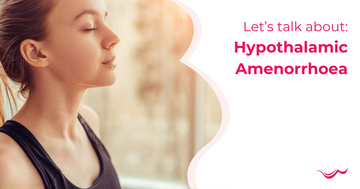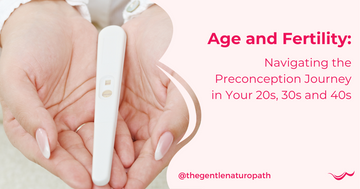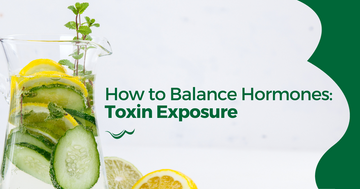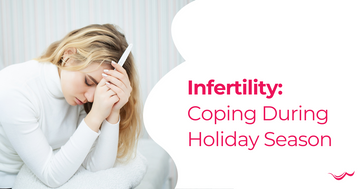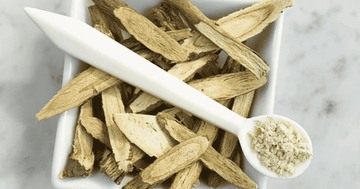
If you've been diagnosed with Polycystic Ovarian Syndrome (PCOS), you may be feeling a little defeated. The infertility caused by an irregular cycle (or no periods at all) can significantly impact how you feel.
Other symptoms can also impact how you feel. Other symptoms may include weight gain, mood swings, acne and facial hair. Symptoms may also include hair loss. They can all play a significant role in how you feel overall.
Not only that, the pain! PCOS can cause painful sex, periods and ovulation which can make you feel uncomfortable. Laughing the wrong way can even sometimes cause jabbing pain in your sides with PCOS.
Often women are put on contraception to counter the hormonal imbalances that contribute to PCOS. There are minimal treatment options for PCOS and there's not a lot of support.
Hormonal contraception can sometimes worsen PCOS symptoms, especially if you've been on them for a prolonged time. The synthetic hormones tend to deplete naturally occurring hormones. This is because the body is smart; it doesn't want to put energy into making hormones if we're getting them externally.
This can often deplete progesterone and increase estrogens (it's a lot more complex than that, but that's another article topic). The pill is also known to contribute to nutrient deficiencies so taking a multivitamin is beneficial.
The problem with that is when we come off the contraception device, our hormones need to take time to re-balance. This can take months to years depending on how long contraceptives have been used. If you've just come off the pill or other forms of contraception, then herbal medicine may help. These two herbs have been shown to work together to regulate the hormonal communication with the body.
Licorice (Glycyrrhiza glabra)
It is a renowned herb that has been used traditionally for thousands of years, particularly working on the endocrine system. Licorice contains isoflavones (phytoestrogens). These may modulate estrogen, progesterone and testosterone, particularly hirsutism (excessive facial and body hair) in females (Grant, 2012).
This amazing herb has shown promising nootropic and cognition-enhancing pharmacodynamics on animal and human models. This is through specific non-competitive inhibitor against BACE1 enzyme, prevalent in Alzheimer’s (Esmail Al-Snafi, 2018).
Licorice competitively inhibits 11β-hydroxysteroid de-hydrogenase, ultimately reducing cortisol production (our stress hormone). Licorice also displays operative mineralocorticoid-like activity, particularly sodium retention reducing over-stimulated nervous system activity (Esmail Al-Snafi, 2018).
Its phenols have been shown to specifically target uterine estrogen receptors. This provides anti-inflammatory and estrogen modulation directly within the uterine lining (Esmail Al-Snafi, 2018).
White Peony – Paeonia lactiflora
White peony has been used traditionally in Chinese medicine for female hormone modulation. This beautiful herb increases aromatase testosterone to estrogen conversion, reducing/modulating testosterone (Grant, 2012).
Peony targets the ovaries to inhibit testosterone production (Rooney, 2014). However, it has been shown to be utilized for a variety of therapeutic effects.
This includes immuno-modulation, anti-viral, cytotoxic and tonic actions. It also includes cardiovascular tonifying anti-tumour, anti-bacterial and anti-fungal actions. Peony has antioxidant, neuro-protective and glycaemic modulation actions. Peony has hormone modulation actions (Parker, 2016).
The herb has pronounced systemic anti-inflammatory properties. This is through modulation of pro-inflammatory cytokines. As well as cAMP, IL-1, IL-6, TNF-alpha, and lymphocyte regulation, as well as many other pathways. It appears the herb works within the liver, kidneys, joints, cardiovascular system, nervous system and endocrine system (Parker, 2016).
Combination therapeutic interventions
Peony and Licorice have been found to significantly increase dopamine D2 receptors and reduce antipsychotic-induced hyper-prolactinemia (hyperPRL) (Wang, 2012). Combination therapy has also been shown to reduce polycystic ovarian syndrome (PCOS), endometriosis, menstrual irregularities and infertility (Rooney, 2014).
The traditional use of combining herbs has found Paeonia lactiflora and Glycyrrhiza glabra enhance each other. This is through enhancing their key constituents promoting HPA/HPO homeostasis (Rooney, 2014) (Zhou, 2019). Together, they may also promote increased anti-inflammatory, anti-cancer, anti-bacterial and antiviral effects (Zhou J.-X. &., 2018).
Together, the herbs may provide hypo-glycaemic and anti-hyperlipidaemic actions. However, their mechanisms of actions in combination are still to be further researched and established (Rooney, 2014).
***These herbs can interact with hormonal therapies and other medications. It is vital to discuss these options with a trained natural health professional (naturopath or herbalist). This is to ensure these are the safest and most therapeutic herbs for you.
Written by: Renee Grandi, Nutritionist & Naturopath Founder of Earth Goddess Natural Health. If you’re suffering from PCOS or hormonal imbalances natural health interventions can make significant improvements. This is through gently healing the body and get you feeling fabulous again.
Book in a Naturopathic or Nutritional Consultation with Renee Grandi (BHs. Naturopathy, Adv. Dip. Nat., Adv. Dip. Nut., B.S. Metaphysics) to create an individual treatment protocol for your healing.

